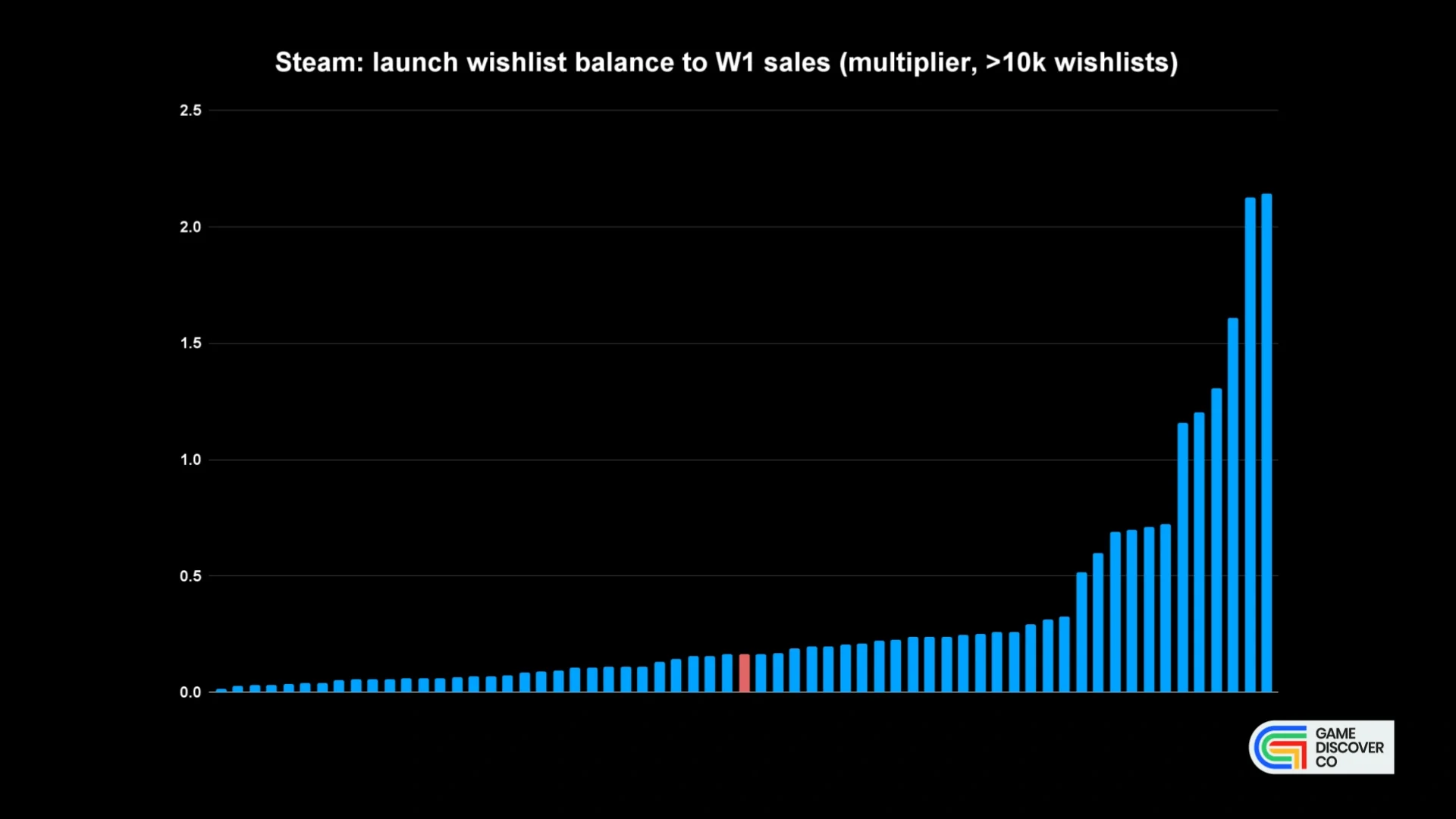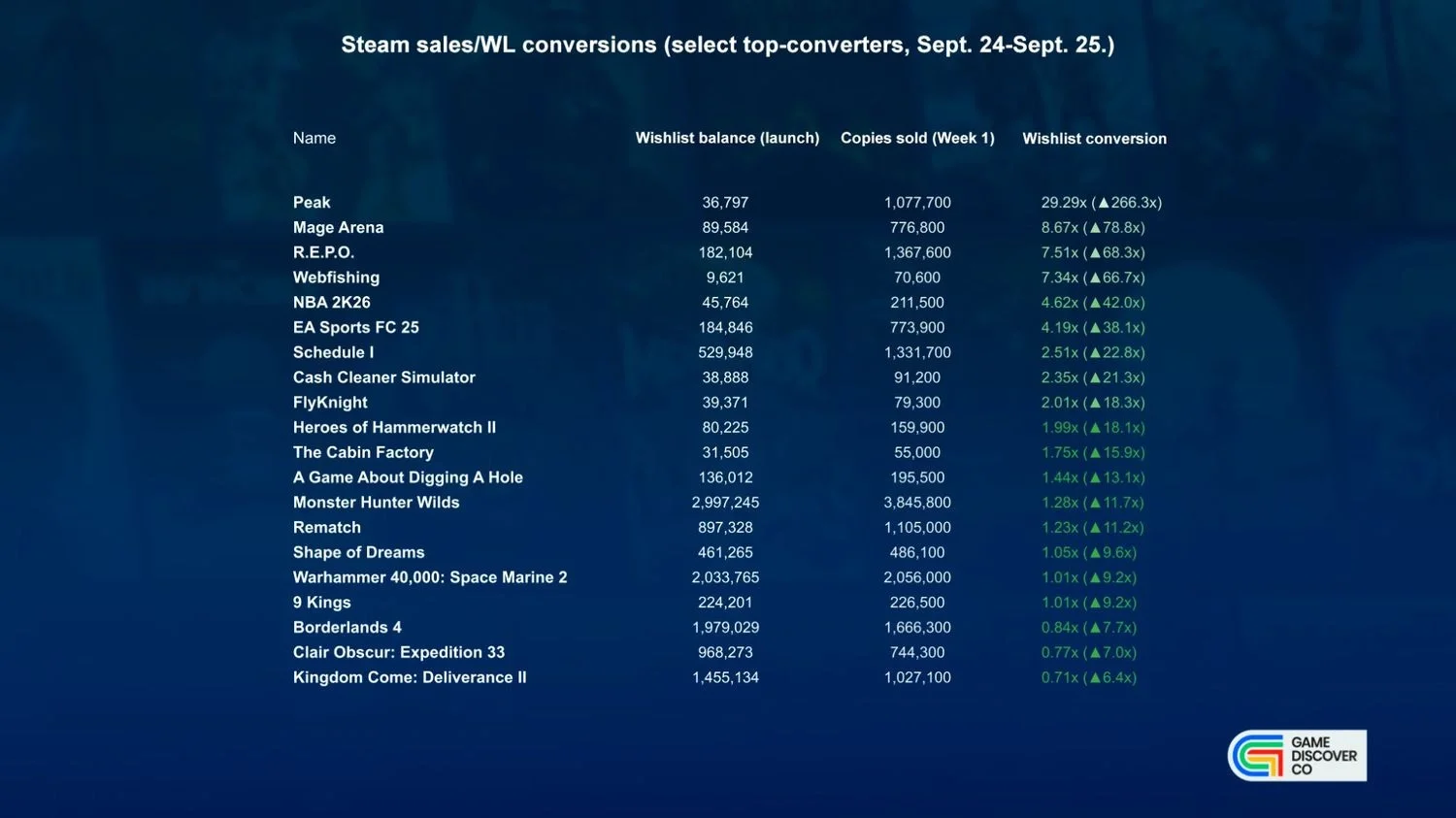Steam Wishlists vs. Reality: Why Some Games Sell Like Hotcakes (and Others Flop)
Ah, the Steam Wishlist. That digital graveyard of good intentions where games go to wait for a deep discount or complete oblivion. But how many of those hopeful clicks actually translate into cold, hard cash for developers? Game industry researchers GameDiscoverCo decided to find out.
They crunched the numbers for games released between September 2024 and September 2025, focusing on titles that managed to snag at least 25,000 wishlists before launch. While Valve insists wishlists don't directly juice the algorithm much (except for things like the "Popular Upcoming" list), they're still vital because Steam pings users when wishlisted games launch or go on sale.
The big number? The median conversion rate – how many wishlists turned into first-week sales – was 0.15. That means for every 100 wishlists, the average game sold about 15 copies in its first week. Interestingly, this is a bit higher than GameDiscoverCo expected, suggesting things aren't quite as dire as some feared. But the real story is in why some games blew past this average and others faceplanted.
What Makes Wishlists Convert? Going Viral & Big Brands
Looking at the top 20 games with the best conversion rates, a few patterns emerged. Co-op games that exploded in popularity, like the mountain-climbing hit PEAK (you know, the one whose devs had some choice words about a Roblox ripoff) or the spell-slinging Mage Arena, did exceptionally well. When a game goes viral with streamers and players, those wishlists apparently convert like crazy, especially in the online co-op space.
Then you have the weird outliers: massive sports franchises like NBA 2K26 or EA Sports FC 25. These games sell millions, but their core audience often just buys them outright without wishlisting first. Compared to their huge sales, their wishlist numbers look small, resulting in statistically massive (but slightly misleading) conversion rates. Don't worry, plenty of other games outside this top 20 still saw great success, sometimes selling 1-to-3 times their wishlist count.
Why Wishlists Fail: Bad Reviews and the Long Wait
On the flip side, the study identified key reasons why wishlisted games fail to sell. Unsurprisingly, bad reviews are a killer. The top 20 converters boasted an average first-week Steam review score of 91%, while the bottom 20 scraped by with just 67%. If players see those negative reviews pop up at launch, they're likely hitting "ignore" on that wishlist notification.
Another factor? Long waits. Games in the bottom 20 languished on Steam store pages for an average of 411 days before release, compared to 214 days for the top performers. While a long lead time can gather more wishlists, it doesn't guarantee sustained hype. Interest can fizzle out.
Sequels also tend to convert lower, possibly due to sky-high expectations or simultaneous deep discounts on the older games in the series. And those really unique, "boutique indie" titles? They might rack up wishlists from curious onlookers who ultimately never pull the trigger.
The NSFW Anomaly
So why was the median conversion rate higher than expected? One surprising factor: NSFW adult games. These titles showed up disproportionately among the high-conversion crowd. The theory is that the audience for these niche games is pretty dedicated – they wishlist what they want, and they buy it. It makes sense, but it does skew the overall average a bit, making them a statistical outlier.
Is the Sky Falling? Not Exactly.
Despite fears that wishlist conversion is tanking overall, the data from 2022 to 2025 doesn't really support that. The median rate seems relatively stable. The real challenge? The sheer volume of games flooding Steam every year makes it exponentially harder just to get noticed and earn those wishlists in the first place. Getting wishlists is tougher, even if the conversion holds steady. And getting on that list is still crucial for visibility during big events like the upcoming Steam Sales.
So, wishlists aren't a magic bullet, but they're far from useless. They reflect genuine interest, drive crucial launch/sale notifications, and remain a key indicator in Steam's increasingly crowded battlefield. How developers convert that interest hinges on reviews, hype, timing, and finding the right audience – even if that audience is just looking for ducks or pixelated porn.

